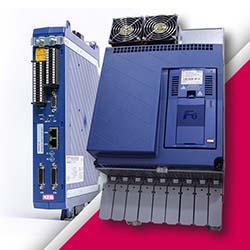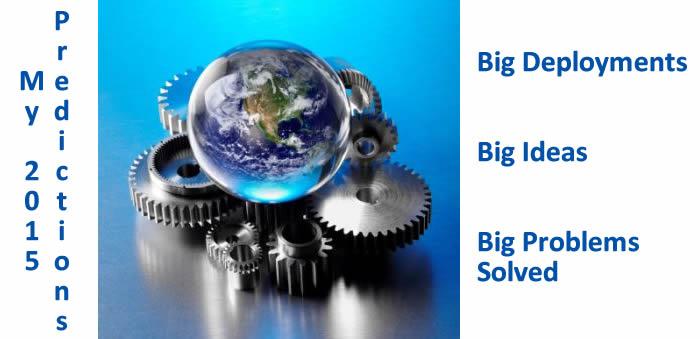I see three exciting and significant trends taking place right now that I think will begin to gain some very real traction in 2015.
Rodney Brooks, Founder, Chairman and CTO | Rethink Robotics
I am often asked to share my thoughts or predictions for the robotics industry in the coming year, but I rarely put forth anything ‘formal’ in the way of forecasts. There are simply too many variables, and the industry is changing so rapidly that it somehow seems unreasonable to suggest that anyone can make anything more than an educated guess as to where we’ll all be 12 months from now.
So with that requisite disclaimer in mind, I do see three exciting and significant trends taking place right now that I think will begin to gain some very real traction in 2015.
1. We will begin to see large-scale deployment of collaborative and intelligent robots in manufacturing.
The past two years have been a testing ground of sorts for this new category of robotics we call Collaborative. The manufacturing industry, particularly in the U.S., is extremely risk-averse when it comes to new and unproven technologies. Yet, the early adopters continue to deploy these robots successfully, and as they’re realizing the benefits are indeed shaping up as advertised, they’re coming back and buying in larger volumes. We have the makings of a very solid snowball right now that continues to gain speed and mass as it rolls downhill.
Just look at the number of industrial robot suppliers, initially dismissive of the category, who are coming out with their own versions of robots they call “collaborative” and you’ll get a sense of the market potential that’s just being recognized on a larger scale. We’re also seeing a great rush by many of those companies to catch up quickly when it comes to incorporating artificial intelligence into their machines. There’s a lot of money being spent right now to make up ground with the goal of being able to label their robots as “intelligent” as well. Either way, this category is taking off, and I expect the number of sold and deployed collaborative robots to go up exponentially over the next several years. Exponentials always start out looking flat, but in 2015 we will start to see the knee in the curve.
2. This will be a breakout year for robotics research.
Not long after we introduced the Baxter collaborative robot for manufacturing purposes, we released (to slightly less fanfare) a research version of the same hardware platform with an open source ROS API. Nearly two years later, Baxter Research Robot is now in use throughout universities of all sizes and reputation levels, and leading manufacturing R&D teams around the world. Rather than having to spend time and money developing a manipulator robotics platform, research and educational teams now have access to a safe, affordable, robust system for exploring their specific application development goals.
It’s been exciting to watch Baxter become the gold standard of human-robot interaction, and even more exciting to see some of the tremendous work these talented students and engineers are doing with our robot. And much of their work has nothing to do with improving manufacturing, but with exploring the use of robots in healthcare, elder care, and other endeavors that are critical to the future of our society. There is not only a social need for this work, but a market need as well. And our customers, as well as the research community at large, are laying an important foundation for innovation that is just starting to unfold. Which leads me to my third, and perhaps most exciting prediction for 2015:
3. Emerging technology will be designed to solve some of the world’s biggest problems.
If there’s been one common criticism I’ve heard (and have offered myself) in recent years, it’s that technology developers often spend too much time and effort focusing on if they can create something, instead of why their innovation should be created in the first place. I often ask young entrepreneurs and those in the start-up community, “Why are you doing what you’re doing? What purpose will it serve? What problem will it solve?” Too often in recent years, their responses have left much to be desired.
Thankfully, that trend is changing, particularly in the Boston area. More and more young innovators are setting out with goals of developing technologies that will serve mankind in specific and positive ways, and it’s exciting to consider the implications of their efforts. When the world’s brightest minds focus their attention on solving the world’s most daunting challenges, great things can happen – and they already are.

About Rodney Brooks
A mathematics undergraduate in his native Australia, Rodney received a Ph.D. in Computer Science from Stanford in 1981. From 1984 to 2010, he was on the MIT faculty, and completed his service as a Professor of Robotics. He was also the founding Director of the Institute’s Computer Science and Artificial Intelligence Laboratory, and served in that role until 2007. In 1990, he co-founded iRobot (NASDAQ: IRBT), where he served variously as CTO, Chairman and board member until 2011. Rodney has been honored by election to the National Academy of Engineering, and has been elected as a Fellow of the American Academy of Arts and Sciences, the Association of Computing Machinery, the Association for the Advancement of Artificial Intelligence, the Institute of Electrical and Electronics Engineers and the American Association for the Advancement of Science.
The content & opinions in this article are the author’s and do not necessarily represent the views of ManufacturingTomorrow
Comments (0)
This post does not have any comments. Be the first to leave a comment below.
Featured Product


